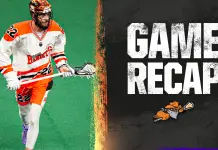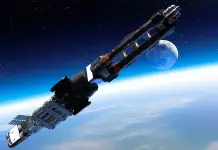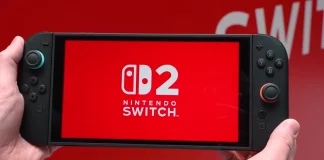In a market heavily oversaturated with live-service games, opting to make the lasting project to your new multimedia franchise such a title, and a paid one at that, sets a very high bar to ensure that players aren’t nickel and dimed at every opportunity and that the experience delivered is worthy of potentially years of play. This is the case with Bandai Namco Entertainment’s relatively new post-apocalyptic mecha multimedia franchise SYNDUALITY, which began with a 24-episode anime back in 2023, multiple novel works and now a video game project known as SYNDUALITY Echo of Ada.
While the third-person shooter is not my go-to genre for relaxation, nor could I say I had the most enjoyable experience during its network testing phase in 2024, SYNDUALITY Echo of Ada has been surprisingly addictive and bingeable. Over the last few weeks, among playtesting other games, it was the title I would pull out to relax after a long day at work, slowly making progress on my base and occasionally swearing after losing hundreds of thousands of in-game currency due to poor split-second decisions. But before I get too far ahead of myself, please keep scrolling for my in-depth look at SYNDUALITY Echo of Ada.
SYNDUALITY Echo of Ada drops you into a bleak, post-apocalyptic world where toxic rain has forced humanity underground, in turn leaving the surface a wasteland where nature, non-human wildlife and oversized mutated lifeforms known as Enders can thrive – but humanity cannot. Tasked with collecting a previous energy resource known as AO Crystals now blooming on the surface, you play as a Drifter piloting a clunky yet dependable mech known as a CRADLECOFFIN — complete with a customizable AI companion known as the Magus — tasked with scavenging these crystals and vital resources to rebuild your base and make bank.
Unlike the more narrative-driven anime, the story of SYNDUALITY Echo of Ada isn’t presented directly; instead, it unfolds gradually through audio logs, video diaries, and mission texts that collectively paint a picture of a society on the brink of collapse yet desperate to reclaim its past. Although the game’s lore offers a compelling premise and hints at deeper mysteries, it often feels as if you’re merely scratching the surface—especially since the narrative frequently takes a backseat to the gameplay loop, a common trait in many live-service titles. Sporadic lore drops and the quirky banter from your Magus provide moments of genuine charm, but these fragments rarely integrate seamlessly with the action, leaving the rich game world feeling somewhat distant. That said, while watching the 2023 anime isn’t essential to follow the story, it would likely offer valuable context that enhances your overall experience of the universe.
SYNDUALITY Echo of Ada boasts a vibrant and distinctive visual style which may feel daunting at first – because those first few outings are very much so – but offers sizable regions to explore, full of vistas, graphical features of the post-apocalyptic world, and landmarks which eventually mean you can navigate them almost without using a map. The magus’, who serve as the game’s customisable characters also have quite a bit of versatility, allowing you to make each of your (up to 20) AI companions unique. Mechs are rendered with a mix of heft and agility that give heftiness and weight to them, but also the ability to navigate most scenarios thrown at them. Unfortunately, for the Mechs and the enemy enders in particular, they can suffer from clunky animations, and occasional performance stutters that momentarily pull you out of the experience and may leave you wondering if they will lead to your craft’s demise.
On the other side of the audiovisual spectrum, the audio design in SYNDUALITY Echo of Ada effectively reinforces its gritty world, with atmospheric ambient sounds that capture the tension of toxic rains and intense combat. Voice acting is solid with multiple Magus’ voiced in English, offering commentary aligned to their personality as you navigate the world during each sortie. However, I feel like each Magus needed to triple or quadruple the voice lines, as the dialogue can get overbearing and repetitive over time. While the soundtrack generally supports the immersion of the game, they tend to play it safe, offering a competent but not groundbreaking auditory experience – that many may be unlikely to listen to just for the vibes.

At the heart of SYNDUALITY Echo of Ada is a gameplay loop that blends sortie planning, resource gathering, and AO crystal extraction under the constant threat of a variety of enders with different approaches to tackling them, fellow drifters (both Bandit NPCs and potentially PvP Players) and infected NPC drifters which arguably pack an extra punch. Each run is an expedition balancing the known with randomness, where every decision—from loadout choices to the route taken can mean the difference between a triumphant return and a devastating loss. The game works under the EVE Online premise of… don’t bulk up and take all your good CRADLECOFFIN gear out at once, lest you risk losing it all, and favours the slow grind of building up your funds, resources and arsenal so that the risk vs reward shines heavily in your favour.
SYNDUALITY Echo of Ada’s battles is a dance, where your mech—dubbed a CRADLECOFFIN—must be piloted with both caution and aggression. The game rewards smart positioning and tactical decision-making, especially when you exploit the well-designed vulnerability on the back of your mech. Whether you’re fending off the relentless, mutating Enders, engaging in nerve-wracking PvP standoffs with fellow drifters, or simply contending with Bandit NPCs, every encounter feels laden with risk. The controls are generally intuitive, letting you focus on the split-second decisions that can mean the difference between a triumphant extraction and a costly, resource-draining demise, even if occasional clunky animations or performance stutters sometimes remind you that perfection remains a work in progress. It can feel overwhelming, and you will find yourself cornered at times, but the difficulty is surprisingly fair, rewarding players who learn from their mistakes. As you hone your skills and begin to anticipate enemy movements, these chaotic skirmishes gradually transform into a finely tuned ballet of tactical maneuvers that not only test your reflexes but also your strategic planning.

The game’s pacing and risk management help maintain a sense of urgency in every expedition. With you dropped off at a random spot on the map, time ticking down, the constant threat of losing valuable gear, and only being able to use three of numerous spots on the map — every decision — from loadout choices to navigation paths—carries significant weight. The interplay between environmental hazards, enemy tactics, and resource scarcity ensures that even a split-second miscalculation can have dire consequences. This delicate balance of risk versus reward not only maintains constant tension but also makes each successful run feel like a hard-fought victory, rewarding players who master the art of strategic decision-making.
One of the most appealing aspects of the gameplay is the depth of customization available for both your mech and your Magus companion. Every upgrade, weapon modification, and module choice influences your versatility on the field – whether you are better at close combat fights, using a variety of different ranged weapons, or sacrificing some of that versatility to just carry more… which in my case was a go-to approach. Furthermore, each Magus is equipped with different innate skills, ranging from having greater AO Crystal detection ranges to the ability to view the life bars of enemies or protect you from the nasty effects of rain exposure for a limited time. The modular system encourages experimentation with different configurations and means that even subtle tweaks can redefine your approach to high-risk sorties.

Outside of a dedicated series of single-player missions, the entirety of SYNDUALITY Echo of Ada is played online, alongside other players. Players can encounter and potentially team up with fellow drifters to complete ad-hoc missions with great rewards, or get shot in the back by a baddie in sheep uh… metal. These unscripted interactions force you to adapt on the fly, as friendly gestures can quickly turn into heated standoffs. Browsing the social media channels for the game indicates that the greater player counter for the PC version has brought a lot more back-stabbing, PvP and hacking / taking advantage of bugs – however, the console versions, particularly the PlayStation 5 servers I played on, had a mostly pacifist player base which kept mostly to themselves.
The game also spices things up with a variety of mission objectives and side tasks that extend beyond the standard resource runs, and are the main source of lore drops and progression in the game – allowing you to unlock new areas, crafting recipes, and items in the shop and more. With SYNDUALITY Echo of Ada still in its early days, there is a point where missions get almost insurmountable to keep you from progressing too far, but I’d expect new requests to be opened up as the new seasons go live alongside new content.

Special challenges, daily quests, and unique side missions, like other live service games, are also there to keep you logging in day after day and contributing to your overall progression. While these activities add variety to the core loop, they are intricately tied to the battle pass and cash shop systems that underpin the game’s monetization model. The battle pass offers exclusive rewards — ranging from premium cosmetic items to valuable in-game items, although nothing particularly pay-to-win at this stage, nor with multiple routes depending on how much you pay. Similarly, the cash shop provides an array of upgrades and aesthetic customizations, which are optional and so far consist of additional Magus tickets, and outfits. There is nothing there that I have found myself compelled to splurge for, however, if you are someone who avoids live service games for this very reason – better safe than sorry.
Other systems in SYNDUALITY Echo of Ada, such as base upgrading and crafting add something extra to do between sorties and contribute to the long-term progression of the game. Upgrading your base is not just a cosmetic exercise (although it can be in some cases) — it directly impacts your gameplay by expanding storage, reducing repair costs, and unlocking new functionalities that ease your resource management challenges. The crafting system allows you to repurpose gathered materials into crucial consumables or even upgrade existing equipment, and while it is pretty rudimentary, does well enough to tie the overall progression of resource and crystal collection and upgrades together.
While most of what SYNDUALITY Echo of Ada does meets or somewhat exceeds expectations if you are after any particular element of the game to be more detailed or expanded upon, you will almost certainly find other games on the market. Furthermore, it is hard to deny that the game does have a degree of repetitiveness and grindyness to it. There is a good chance you will spend sortie after sortie waiting for a particular boss mob to respawn or hunting for a rare item – it can be genuinely frustrating to lose it all through a bad decision that may or may not have been out of control – and there is always that possibility that you could be taken out by a player hoping to claim your resources as their own, just mistake you for a bandit, or just want to grief you. But at the same time, I found it cathartic, simple, approachable fun that didn’t make me switch my brain off due to its simplicity, but rather be approachable bite-sized 20-30 minute adventures with the possibility of striking it big.
While I think it is fair to question how long the game will fare in the ever-growing sea of live service games being released every year, in my opinion, SYNDUALITY Echo of Ada has a gameplay loop that may not appeal to everyone, but was one that I found pleasant for its bite-sized gameplay sessions and ample challenge. While its deep customization, engaging risk-reward mechanics, and immersive audiovisual design offer plenty of reasons to dive in, occasional technical hiccups, repetitive gameplay loops, and an underdeveloped narrative integration arguably prevent it from reaching greater heights. For fans of strategic mecha-based third-person shooters that have online multiplayer elements, the game presents an inviting yet imperfect adventure that will hopefully continue to evolve with future content updates. Will it last the test of time however? That is yet to be seen.
Final Score for SYNDUALITY Echo of Ada
A PlayStation 5 review code was provided by Bandai Namco Entertainment Australia to facilitate this review.
SYNDUALITY: Echo of Ada is now available to purchase on the PC, PlayStation 5 and Xbox Series X|S.



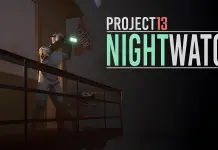


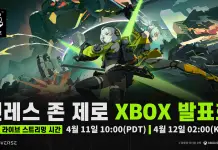





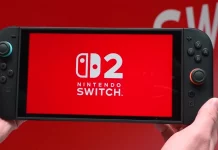




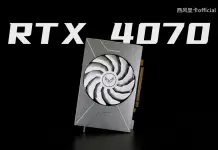
_(4)-218x150.png)



